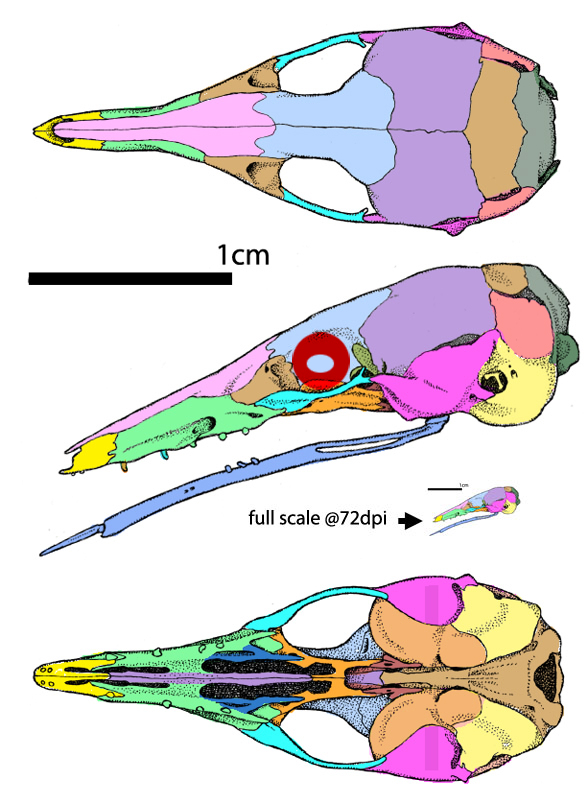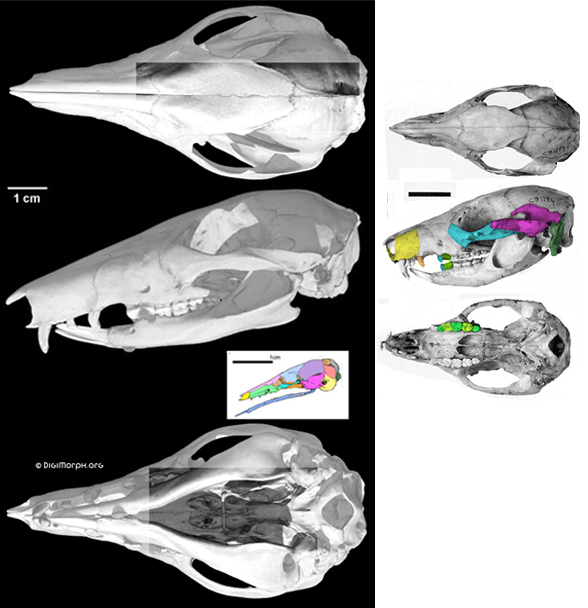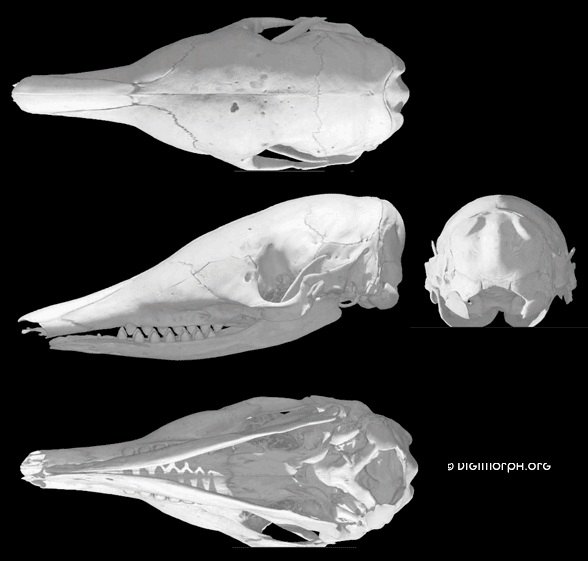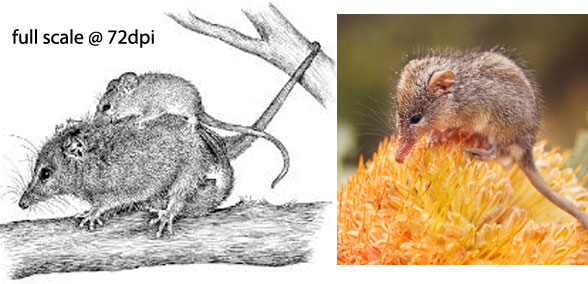Tiny
Tarsipes rostratus (“tarsier foot”, Gervais and Verreaux 1842, 8.5cm max snout-vent length) is the extant honey possum, a phylogenetically miniaturized marsupial subsisting on nectar, like a bee. Despite its tiny size, this is a terminal taxon, not basal to any others… at present.
Related to Potorous, the potoroo
(Fig 4), Tarsipes (Fig 2) has widely spaced and tiny teeth reduced to cones. This is a reversal hearkening back to Early Permian pelycosaurs, convergent with extant odontocetes.

The coronoid process of the dentary is absent, distinct from most mammals.
Tarsipes gestation lasts for 28 days,
with two to four young produced with every pregnancy. At birth, babies are the smallest of any mammal, weighing 0.005 g. Pouch development extends to 60 days. When the babies emerge they are initially eft in a sheltered area, but within days start to cling to their mother during her travels (Fig 1).
Bradshaw and Bradshaw 2012 report,
“Dietary specialisations include the loss of teeth, a modified gut with a high rate of passage. In contrast, its reproductive physiology is plesiomorphic, combining aspects such as a post-partum oestrus (= sexual receptivity while young are in the pouch), embryonic diapause (= suspended development of the gestating embryo), photoperiodicity (= nocturnal) and extended maternal care.”
According to Wikipedia,
“The closest relationship to other taxa was theorised to be Dromiciops gliroides, another smaller marsupial that occurs in South America and is known as the extant member of a genus that is represented in the Gondwanan fossil record. This was supported by phylogenetic analysis, but this is no longer believed to be true.”
That pointess last phrase was due to recent gene testing. Don’t be a foolish paleontologist and trust genes. Use measurable traits and reconstructions that document your scoring.
The large reptile tree (LRT, 2145 taxa, subset Fig 3) nests Tarsipes with Potorous, far from Dromiciops, which lacks large anterior dentary teeth. This relationship indicates these two geographically separated taxa evolved prior to the breakup of Gondwana in the Jurassic.

Shown full scale @ 72 dpi. The skull at right now appears to be a juvenile specimen due to its shorter rostrum and smaller size.
Adult weight in Tarsipes ranges from 5 to 10 grams.
A typical lifespan extends to two years. Tarsipes is able to climb with a prehensile tail and an opposable first toe at the long hind foot that is able to grip like a tarsier’s paw.

The skull of Tarsipes
(Fig 2) is convergent with that of Dasypus, the much larger placental amadillo (Fig 5), which also reduces its premolars and molars to simple cones.
References
Beck RMD, Voss RS and Jansa SA 2022. Craniodental morphology and phylogeny of marsupials. Bullein of the American Museum of Natural History 457:350pp.
Bradshaw D and Bradshaw F 2012. The physiology of the honey possum, Tarsipes rostratus, a small marsupial with a suite of highly specialised characters: a review. J Comp Physiol 182(4):469-89. doi: 10.1007/s00360-011-0632-9.
Gervais P and Verreaux J 1842. L’Institut, l’ere Section, Sci., Math, Phys., Nat. :427 p.75
wiki/Honey_possum
facebook_video


